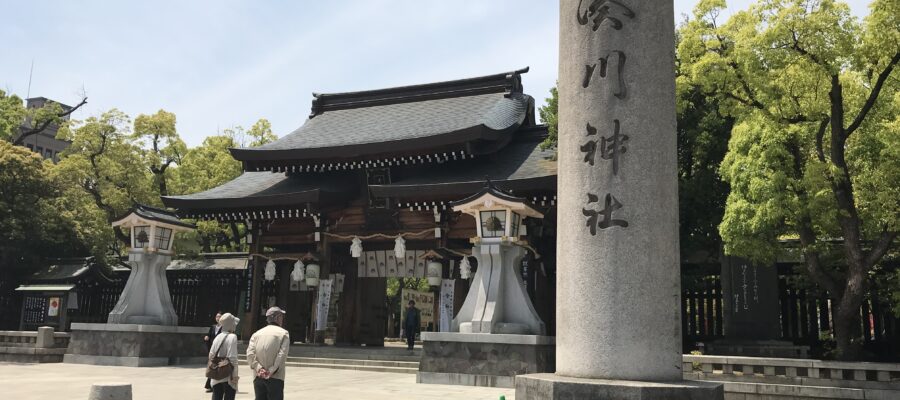楠木正成をお祀りした神社
湊川神社は楠木正成をお祀りした神社です。正成は、勢力を盛り返して九州から攻め上ってきた足利尊氏と戦った湊川の戦いで敗れ、自害しました。正成を慕う地元の人々が、その墓所を大切にしてきました。
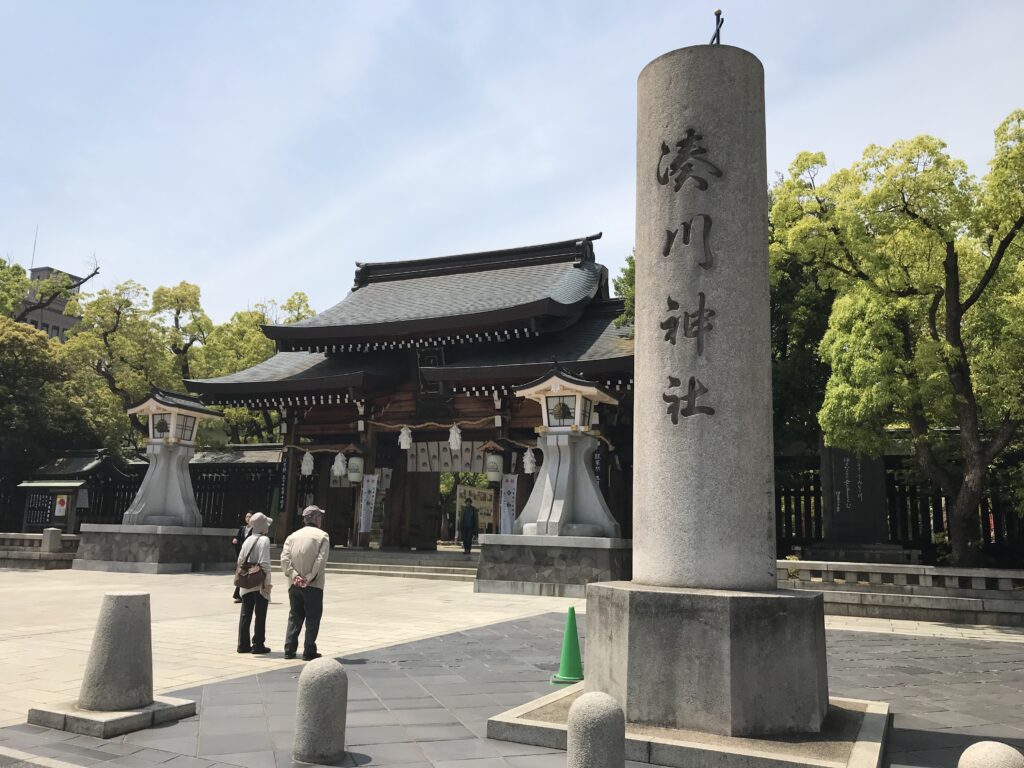
境内に入ると、楠木の並木が正面の本殿まで続いています。やはり、ここの並木は楠木でないといけないのでしょう。大阪の四条畷神社には息子の正行(まさつら)が祀られていました。これで、親子双方が祀られている神社をお参りしたことになります。
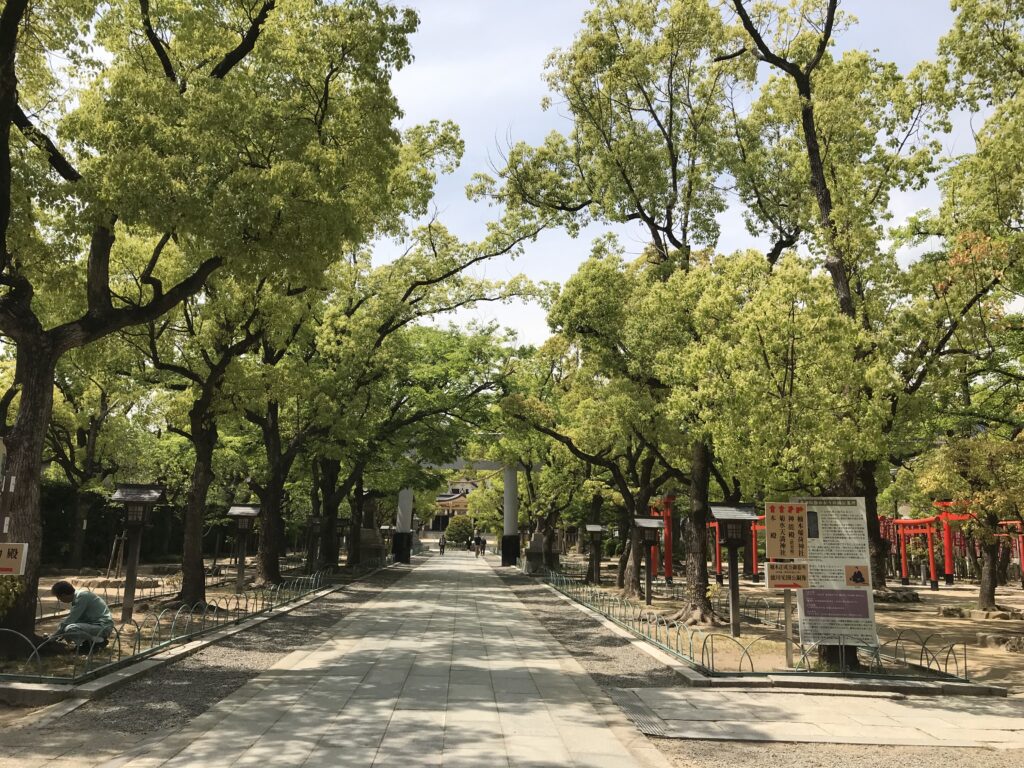
幕末の志士たちの心のよりどころ
この地には、幕末から明治維新にかけて、日本の近代化に活躍した多くの勤王の志士たちがやってきたそうです。高杉晋作、西郷隆盛、坂本龍馬、などなど皆が知っている名前ばかりです。ある意味、正成は、日本の新しい国づくりを願った尊王の志士たちにとって、精神的な拠り所であったようです。
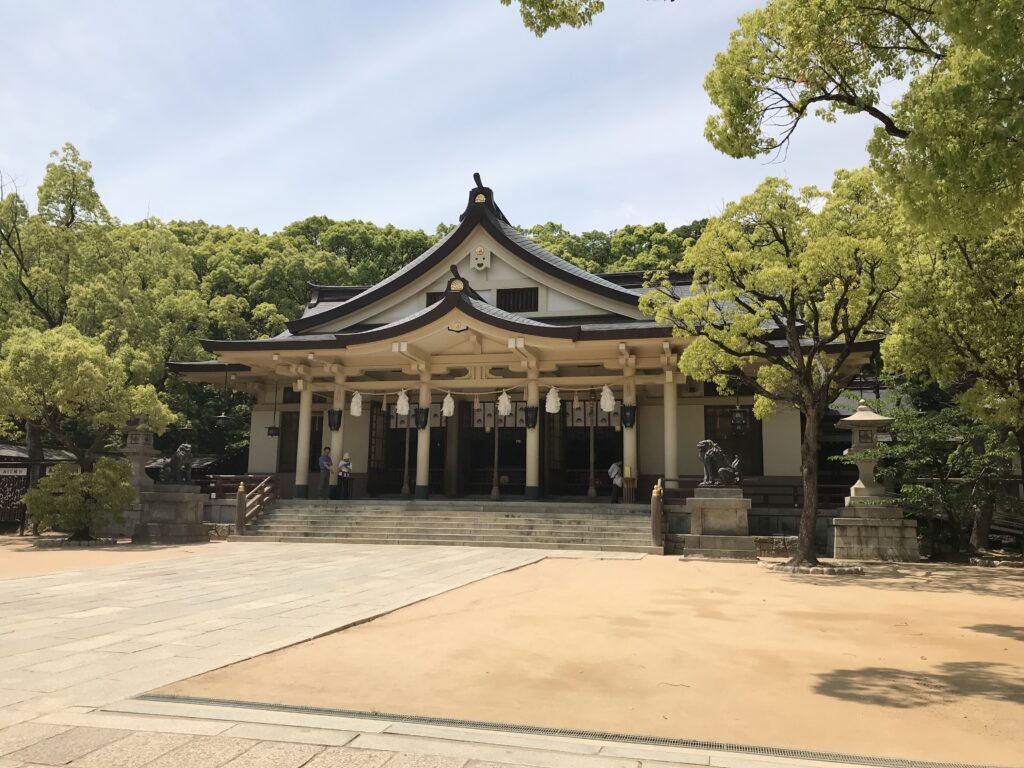
その墓碑を揮毫して建立したのは、水戸光圀であったことを、ここに来て初めて知りました。その墓碑には「嗚呼忠臣楠木之墓」と書かれています。また、昭和になってからですが、境内には光圀の像が建てられています。
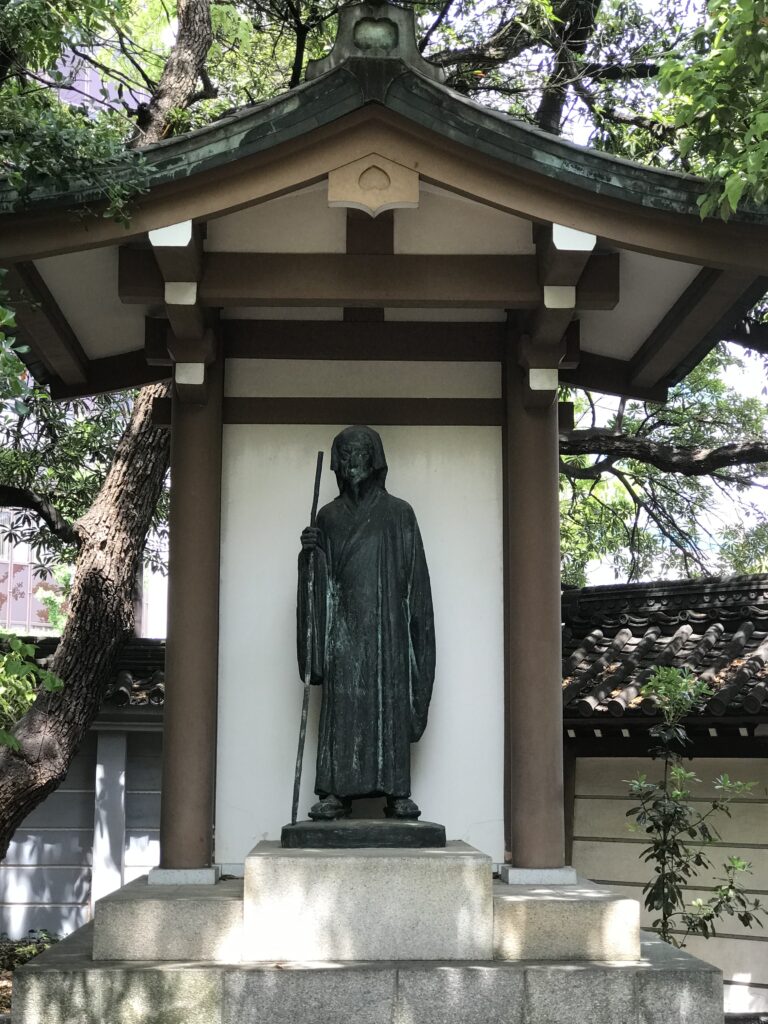
神社自体は、明治になってから創建されました。境内には明治10年のパリ万博で日本館長を務めた前田正名がフランスから持ち帰ったものの一つで、日本最初のオリーブの樹と呼ばれる木も植えられています。(完)
湊川神社の御朱印
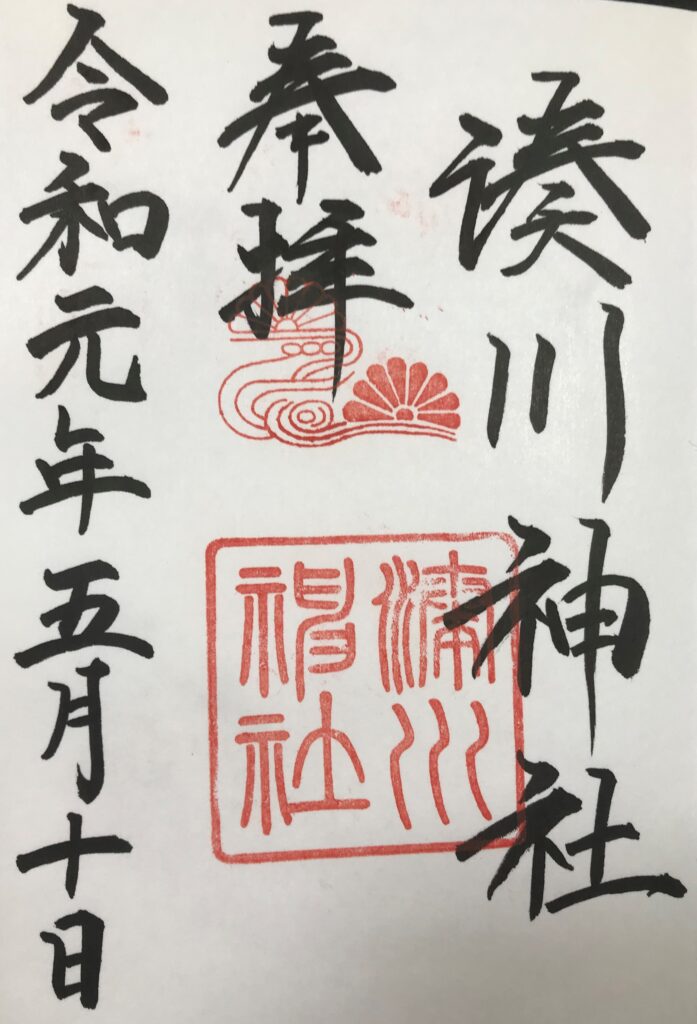
湊川神社が紹介されている書籍
神仏霊場会の公式ガイドブックに湊川神社が紹介されています。
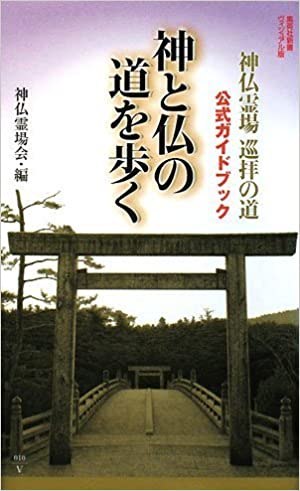
神と仏の道を歩く 神仏霊場巡拝の道公式ガイドブック (集英社新書ヴィジュアル版) [ 神仏霊場会 ]
価格:1,466円
(2021/5/6 09:24時点)
感想(5件)
Minatogawa Shrine (English)
A shrine dedicated to Masashige Kusunoki
Minatogawa Shrine is a shrine dedicated to Masashige Kusunoki. Masashige was defeated in the battle of Minatogawa against Takauji Ashikaga, who had come back from Kyushu and was on the rise, and committed suicide. Masashige’s gravesite has been cherished by the local people who admire him.
As I entered the precincts, I saw a row of camphor trees leading up to the main shrine in front. After all, the line of trees here must be camphor trees (“Kusunoki” in Japanese). At Shijonawate Shrine in Osaka, his son Masatsura was enshrined. This means that I have visited shrines where both father and his son are enshrined.
The Heart of the Bakumatsu (the final period of Samurai Era) people who wished to create a new nation in Japan
From the end of the Tokugawa Shogunate to the Meiji Restoration, a lot of people who were active in the modernization of Japan came to this place. We all know their names: Shinsaku Takasugi, Takamori Saigo, Ryoma Sakamoto, and so on. In a sense, Masashige seems to have been a spiritual stronghold for the people who wished to create a new nation in Japan.
It was not until I arrived here that I learned that it was Mitsukuni Mito who wrote and erected the tombstone. The inscription on the tombstone reads “Aha, the grave of loyal retainer Kusunoki. A statue of Mitsukuni has also been erected on the temple grounds, although it was not until the Showa era.
The shrine itself was built in the Meiji era (1868-1912). In the precincts of the shrine, there is a tree called the first olive tree in Japan, which was one of the items brought back from France by Masanao Maeda, the director of the Japanese pavilion at the Paris Expo in 1877. (End)
Sanctuaire de Minatogawa (Français)
Un sanctuaire dédié à Masashige Kusunoki
Le sanctuaire de Minatogawa est un sanctuaire dédié à Masashige Kusunoki. Masashige fut vaincu à la bataille de Minatogawa contre Takauji Ashikaga, qui était revenu de Kyushu et était en pleine ascension, et se suicida. La tombe de Masashige est chérie par la population locale qui l’admire.
En entrant dans l’enceinte, j’ai vu une rangée de camphriers menant au sanctuaire principal situé devant. Après tout, la rangée d’arbres ici doit être des camphriers (“Kusunoki” en japonais). Au sanctuaire de Shijonawate à Osaka, son fils Masatsura a été consacré. Cela signifie que j’ai visité des sanctuaires où le père et son fils sont tous deux consacrés.
Le cœur du Bakumatsu (la dernière période de l’ère des samouraïs) : les personnes qui souhaitaient créer une nouvelle nation au Japon.
De la fin du shogunat Tokugawa à la restauration Meiji, de nombreuses personnes actives dans la modernisation du Japon sont venues ici. Nous connaissons tous leurs noms : Shinsaku Takasugi, Takamori Saigo, Ryoma Sakamoto, et ainsi de suite. En un sens, Masashige semble avoir été un bastion spirituel pour les personnes qui souhaitaient créer une nouvelle nation au Japon.
Ce n’est qu’en arrivant ici que j’ai appris que c’est Mitsukuni Mito qui a écrit et érigé la pierre tombale. L’inscription sur la pierre tombale se lit comme suit : “Aha, la tombe du fidèle serviteur Kusunoki. Une statue de Mitsukuni a également été érigée dans l’enceinte du temple, bien que ce ne soit pas avant l’ère Showa.
Le sanctuaire lui-même a été construit à l’ère Meiji (1868-1912). Dans l’enceinte du sanctuaire, il y a un arbre appelé le premier olivier du Japon, qui était l’un des objets rapportés de France par Masanao Maeda, le directeur du pavillon japonais à l’Expo de Paris en 1877. (Fin)
